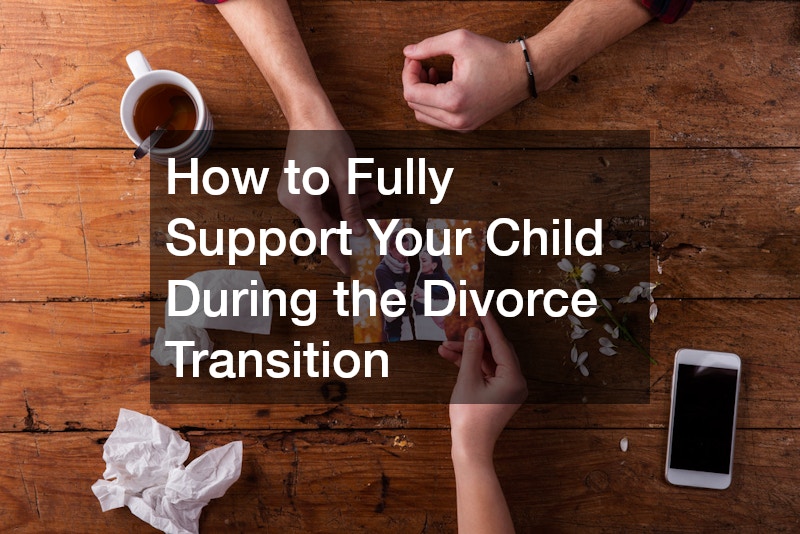
Divorce is an emotional and challenging experience for everyone involved, particularly for children. As parents navigate this difficult time, it’s crucial to prioritize the well-being of their children. This article aims to guide parents through the best practices to ensure their child’s emotional, educational, and psychological needs are met during the divorce oricess. With insights into various approaches, from effective communication to maintaining routines, this piece will equip you with strategies to support your child and create a sense of stability.

1. How Can I Communicate Effectively With My Child About the Divorce?
Communication is key when it comes to helping your child understand the divorce process. Be honest, yet age-appropriate, in explaining the situation. Let them know that the divorce is not their fault and that both parents still love them despite the separation. Reassure them that their emotions are valid and that it’s okay to feel sad, angry, or confused.
Encourage open dialogue and be available to answer their questions. Addressing their concerns with patience and empathy can reduce their anxiety about the changes. Use simple language that they can understand, avoiding blame or negativity towards the other parent. This approach fosters a supportive environment where your child feels safe to express their feelings.
Lastly, maintain consistent communication. Regular check-ins provide an opportunity for them to voice their thoughts and feelings over time. This cumulative approach helps build trust and ensures your child feels heard and validated throughout the divorce transition.
2. What Are the Signs That My Child is Struggling With the Divorce Transition?
Children may exhibit various signs of struggle during the divorce transition. Behavioral changes, such as increased aggression or withdrawal, can indicate that they are having a hard time coping. For instance, if your previously outgoing child becomes unusually shy or isolated, this may be a red flag.
Academic performance can also be affected. A decline in grades or a lack of interest in school activities might suggest that your child is distracted by the emotional stress of the divorce. Engaging teachers and school counselors can help you monitor these changes and provide additional support.
Physical symptoms, such as changes in eating or sleeping habits, can also be indicators. You may notice that your child is experiencing frequent headaches, stomachaches, or even issues requiring specialized care like braces treatment. Regular visits to their pediatrician can help to identify and address these physical manifestations of stress.

3. How Do I Create a Stable Environment Amidst the Changes?
Creating a stable environment during the divorce transition is essential for your child’s well-being. Consistency in routines, such as meal times, bedtimes, and daily activities, helps provide a sense of security. This structure can help mitigate the anxiety and uncertainty that comes with major life changes.
Ensure that both homes have a similar set of rules and expectations. This alignment reduces confusion and helps your child adjust to living between two households. Co-parenting effectively, perhaps with the guidance of a local divorce attorney, can facilitate this consistency.
Physical spaces also matter. Creating a familiar and comfortable environment in both homes can provide a sense of continuity. Including personal items, such as their favorite toys or décor, can make each space feel like home, reinforcing their sense of security.
4. How Can Co-Parenting Be Managed Successfully?
Co-parenting is a critical aspect of supporting your child during the divorce transition. Effective co-parenting involves open communication, mutual respect, and putting your child’s needs first. Establishing a structured plan with the help of divorce mediation can ensure that both parents have clear roles and responsibilities.
It’s important to maintain a united front. Avoid arguing or discussing contentious issues in front of the child. Presenting a cooperative relationship reassures your child that they are loved and cared for by both parents. This harmony can alleviate the emotional burden of choosing sides and promote a more balanced adjustment.
Regular check-ins with your co-parent to discuss your child’s progress and any concerns can further ensure their well-being. Utilizing tools such as shared calendars and apps can help maintain smooth coordination and communication. This diligent approach to co-parenting can make the divorce transition less turbulent for your child.

5. What Should I Do If My Child Blames Themselves for the Divorce?
It’s not uncommon for children to internalize the divorce and blame themselves. Addressing this misconception early on is crucial. Reinforce that the decision to divorce is solely between the parents and has nothing to do with the child. Use clear and simple language to dispel any feelings of guilt they may harbor.
Open up pathways for discussion. Encourage your child to express their feelings and fears. Validation of their emotions, coupled with reassuring discussions, helps to alleviate their sense of responsibility for the divorce. Sometimes external resources, like a counselor skilled in child development, can provide additional strategies and support.
Positive reinforcement also plays a key role. Highlight their strengths and reassure them of their continued importance in both parents’ lives. Emphasizing their worth and the love both parents have for them can help mitigate feelings of self-blame and boost their self-esteem.
6. How Important is Maintaining Routine for My Child During the Divorce?
Maintaining a routine during the divorce process is incredibly important for a child’s sense of stability and security. Routines provide predictability, which can be comforting when other aspects of their life are changing. Consistent daily schedules, such as morning routines, meal times, and bedtimes, help establish a sense of normalcy.
Educational routines are equally important. Regular school attendance and participation in extracurricular activities, like sessions with baseball pitching experts, ensure that your child’s day-to-day life remains as unaffected as possible. This continuity in their routine can help them stay focused and engaged, minimizing the emotional impact of the divorce. Ensure they keep going to their regular medical appointments, where they may need skin safe adhesives if they suffer any injuries. Dentists will ensure their oral health stays maintained, while keeping them in their routine.
Participate in memorable family activities, such as visiting your favorite local restaurant for the best Mexican food, can create positive experiences amidst the transition. These routines and shared moments can provide emotional stability and help reinforce family bonds despite the changes.

7. What Resources Are Available for Children Going Through Divorce?
There are numerous resources available to support children during the divorce transition. Professional counseling services can offer tailored support based on your child’s unique needs. Therapists specializing in divorce can help your child navigate their emotions and develop coping strategies.
Support groups provide another valuable resource. These groups allow children to connect with peers who are experiencing similar situations. Sharing experiences and feelings in a group setting can provide comfort and reduce feelings of isolation. Check with local community centers or schools for available support groups.
Educational resources, such as books and online materials about divorce tailored for various age groups, can help children understand and manage the changes they are experiencing. Engaging with these resources can help normalize their feelings and provide practical advice for coping. Consulting with experts in child development can also help you identify the most appropriate resources for your child.
8. How do Different Age Groups React to Divorce and How Should I Address Their Needs?
Children of different age groups will react to the divorce process in various ways, requiring tailored approaches to support their needs. Young children (ages 2-6) may struggle with feelings of abandonment and confusion. They need simple, clear explanations and lots of reassurance that both parents love them.
School-aged children (ages 7-11) might feel a mixture of guilt and rejection. They might also worry about practical matters like where they will live. Offering them consistency, involving them in routine activities such as choosing the best preschool for their younger siblings, and ensuring stability in everyday schedules can help ease their concerns.
Teenagers (ages 12-18) are more likely to understand the complexities of divorce but may also experience intense feelings of anger or sadness. Encouraging open communication and respecting their need for space can be beneficial. Engaging them in family discussions and decisions recognizes their maturity and helps them feel valued.
9. How Can I Encourage My Child to Express Their Feelings About the Divorce?
Encouraging your child to express their feelings is crucial during the divorce process. Create a safe, non-judgmental environment where your child feels comfortable sharing their thoughts and emotions. Ask open-ended questions and listen actively to understand their perspective.
Use creative outlets such as drawing, writing, or storytelling to help younger children articulate their feelings. For older children, engaging in regular conversations and even journaling can be therapeutic. Encourage them to share their experiences and emotions in a way that feels natural to them.
Sometimes, children may be reluctant to open up. In such cases, seeking the help of a therapist or counselor skilled in child development can provide additional tools and strategies. These professionals can facilitate communication and offer a neutral space for your child to express themselves more freely.
10. How Can I Ensure That My Child’s Education is Not Affected by the Divorce?
Ensuring that your child’s education is not affected during the divorce transition is a priority. Maintain clear communication with their teachers and school counselors about the changes in your family situation. These educational professionals can offer support and monitor your child’s academic performance and behavior.
Reinforce the importance of homework and staying engaged in school activities. Encourage regular participation in extracurriculars, whether it’s sports, arts, or other interests. This involvement can provide stability and continuity, helping your child maintain focus amidst the emotional upheaval.
If your child needs additional help, consider tutoring or other educational resources. Address any concerns early on to prevent academic decline. Collaborating with educators and the school can create a supportive learning environment that helps your child succeed despite the challenges of the divorce transition.
11. What Role Does Therapy Play in Helping My Child Cope With the Divorce?
Therapy can play a vital role in helping your child cope with the divorce transition. Professional therapists offer a safe space for your child to express their feelings and work through their emotions. They can provide coping strategies tailored specifically to your child’s needs.
Family therapy can also be beneficial. It helps improve communication among family members and addresses collective issues that arise during the divorce. This therapy can foster a better understanding and more robust emotional support network for the child.
Regular sessions with a therapist skilled in child development can also help identify any underlying issues that may need attention. Whether it’s anxiety, depression, or behavioral changes, early intervention through therapy can promote healthier emotional and psychological development during the divorce process.
12. How Do I Take Care of My Own Emotional Well-being to Better Support My Child?
Taking care of your own emotional well-being is crucial to effectively support your child during the divorce transition. Manage your stress through healthy habits such as regular exercise, balanced diet, and adequate sleep. Remember to take time for self-care activities that you enjoy.
Seeking support from friends, family, or a professional counselor can also be beneficial. Having a support system in place can help you process your emotions and provide a better emotional foundation for your child. Maintaining your mental health allows you to be more present and supportive.
Engage in activities that bring joy and relaxation, whether it’s a hobby, spending time outdoors, or enjoying the best Mexican food at your favorite local restaurant. Taking care of yourself not only sets a positive example for your child but also ensures that you have the emotional resilience to help them through the divorce transition.
Supporting your child during the divorce process is a multifaceted challenge that requires empathy, communication, and consistency. By addressing their emotional, educational, and psychological needs, you can help them navigate this difficult time. Utilize the various strategies and resources available, from effective co-parenting to professional therapy, to provide a stable and loving environment. Your proactive efforts will significantly influence your child’s ability to cope and thrive despite the changes. Remember, the goal is to ensure that your child feels secure, heard, and loved through every step of the transition.



